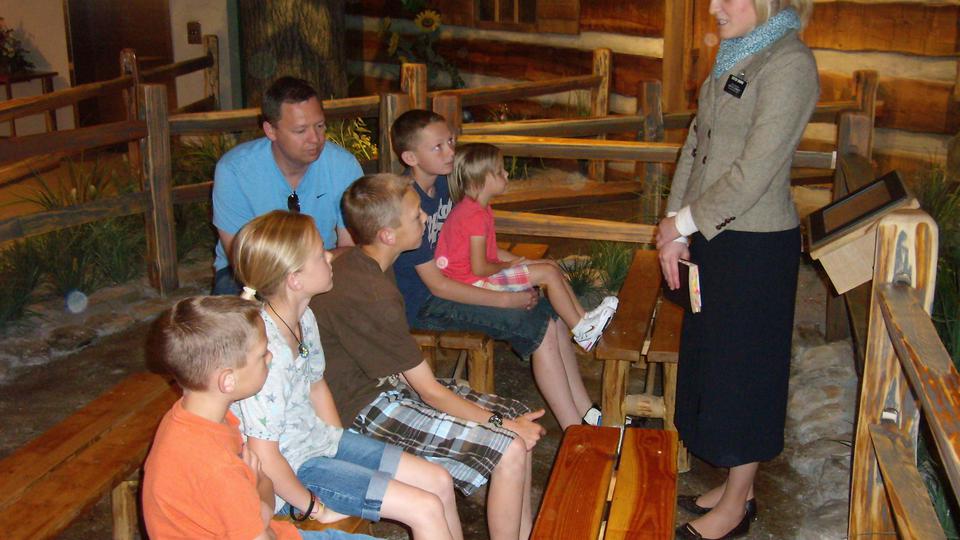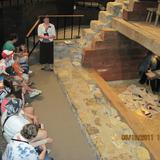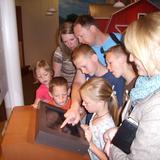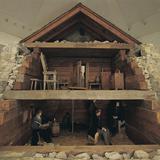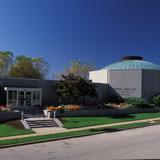Early Latter-day Saints experienced some of the darkest days of the Church in Independence and Liberty, Missouri. For a brief period, though, Missouri’s frontier also proved to be where some of the happiest times occurred for members of the fledgling Church.
Independence and Liberty are now destinations steeped in meaningful history for members of the Church and anyone interested in the saga of early America.
| A Church volunteer missionary teaches visitors about Joseph Smith's imprisonment in the Liberty Jail 2011 Intellectual Reserve, Inc. All rights reserved | 1 / 6 |
“As people visit the Church historic sites in the area, they’ll come to understand that Independence and Liberty, Missouri, areas are important and even sacred places for members of the Church,” said Gary Boatright Jr., a curator for the Church History Department.
Background: Independence
Independence is the hometown of the 33rd president of the United States, Harry S. Truman, but also home to the sixth governor of Missouri, Lilburn Boggs. Boggs is notorious for his personal anti-Mormon sentiment that set in motion the infamous Missouri Executive Order 44, or “extermination order,” that forced hundreds of Mormons from their homes and the state in the dead of winter.
While the Church’s headquarters was still located in Kirtland, Ohio, the Prophet Joseph Smith sent a small emissary of missionaries to Jackson County, Missouri, in January of 1831. The group was sent to teach the indigenous Native American people about the Church.
Joseph Smith arrived in Jackson County in July of that same year, proclaiming the area as “Zion” and as a gathering place for Latter-day Saints, this after receiving a revelation now recorded in the Doctrine and Covenants (see D&C 45:66). The day after his arrival he dedicated a plot of land purchased by the Church in Independence as the future site of a new temple for the city of Zion (see D&C 57:1-5).
As more Mormons arrived and settled, their Missouri neighbors disapproved. That sentiment escalated in July of 1833 when a mob gathered, damaged Latter-day Saint property and tarred and feathered two Church leaders. The mob then gave an ultimatum for the Saints to leave Jackson County after the fall harvest.
Mormons sought legal help to retain and protect their property. This angered members of the mob, who insisted that the Mormon settlers leave sooner. Violence erupted between the mob and Church members. Latter-day Saints were forced to flee to nearby counties. The proposed temple in Independence was never to be built.
By the fall of 1838 most Mormon communities were driven from the state of Missouri with the issuance of Boggs’s extermination order. Some years later the Church sent representatives to reclaim and sell property that was left behind in Jackson County. After the Church moved to Salt Lake City, Utah-based Latter-day Saints as well as divergent groups of followers of Joseph Smith, now known as the Community of Christ and the Church of Christ (Temple Lot), returned to Independence and took up residence.
Currently The Church of Jesus Christ of Latter-day Saints, the Community of Christ and the Church of Christ each own portions of the original 63.27-acre tract known as the temple lot.
Background: Liberty Jail
Perhaps some of the most trying days for the Prophet Joseph Smith were in 1838 after Governor Boggs signed the extermination order to expel the Saints from Missouri.
The Mormon prophet and five other men, including Joseph’s brother Hyrum, were falsely arrested and imprisoned in the Liberty Jail, located some 13 miles north of Independence.
“That was probably the lowest point in his life personally, as a religious leader, as a father and as a husband because he was imprisoned in the jail, living in horrific conditions for a little more than four months, while his people were suffering, and there was nothing he could do about it.” Boatright said.
Joseph Smith and his companions were behind bars in Liberty Jail from December to April. The crude structure stood two stories high with outer walls and an inner wall that combined to create a four-foot-thick barrier and a single trap door that led to the dungeon below the first floor. The conditions were deplorable, the air was putrid and the dungeon was not suitable for a fire. The structure had only bars to cover the two open windows. Frigid winter temperatures chilled the suffering men to the bone. Hyrum Smith said of his incarceration that the jail had a “sticky smell” and the bad food “vomited us almost to death.”
It was during this time that Joseph may have sunk to the lowest depths when he cried out in prayer, “O God, where art thou?” It was at that point that the Prophet said he received comfort and divine revelation from the Lord (recorded in Doctrine and Covenants 121,122 and 123). The experience was life-altering for the Prophet.
“When Joseph left Liberty Jail he left a changed man,” Boatright suggested. “He no longer relied on a spokesman, but spoke for himself. We see him really taking charge in Nauvoo and we all know what happened in Nauvoo, the wonderful city that he built up.”
Elder Richard L. Adams, director of the Independence Visitors’ Center and the Liberty Jail added, “The refinement process that took place in the Liberty Jail, the change that occurred to [Joseph], gave him an even greater capacity of compassion for members of the Church as well as those not of his faith.”
Independence: What to See and Do
The Independence Visitors’ Center located at 937 West Walnut St. is built on a 25-acre portion of the original temple lot. Visitors may choose to listen to the 25-minute presentation by Church volunteer missionaries, which includes a film of the history of the Saints in Independence, or check out the many displays and kiosks, which feature information about temples, the Book of Mormon and the history of the Church.
“People will come away from the site strengthened and uplifted, and hopefully they’ll carry that feeling with them and that experience with them throughout their lives,” said Elder Adams.
One person not of the Mormon faith said of the presentation at the visitors’ center, “What a wonderful and educational experience! Knowledge opens faith, understanding and acceptance. Thank you.”
Another visitor noted, “What a wonderful display and information. It was very informative and spiritual. I am glad that that I came to learn more about Church history.”
Other places of interest in Independence very close to the Church’s visitors’ center are the Community of Christ and Church of Christ historic sites.
Community of Christ International Headquarters
The Community of Christ owns acreage on the south portion of the original temple lot, where its headquarters are located. Guided tours are available to the public for the Community of Christ Auditorium and Temple.
Church of Christ (Temple Lot) Site
Also owning a 2.5-acre portion of the original temple lot is the Church of Christ (Temple Lot). Located on its property are two temple stone markers, the southeast cornerstone and the northeast marker that were placed there by Joseph Smith after he dedicated the temple lot. It is open to the public.
Free Admission
Schedule
Open daily 9:00 a.m. - 9:00 p.m.
Contact Us
816-836-3466
http://www.cofchrist.org/visit/
Liberty: What to See and Do
The Liberty Jail Historic Site is located at 216 North Main St., a block north of the Clay County Courthouse. The visitors’ center houses a partially reconstructed Liberty Jail. People will get a sense of the confinement that Joseph Smith and his companions endured for four months. They will also have the opportunity to hear a presentation on what led up to the arrest of six Latter-day Saint men, including their prophet, and the grim day-to-day struggle for survival they faced.
“Members and those not of our faith visiting Liberty Jail will learn of this trying period for the Saints, and not just how it affected Joseph, but how it has affected millions of Latter-day Saints today,” said Gary Boatright.
Free Admission
Schedule
Open daily 9:00 a.m. - 9:00 p.m.
Contact Us
816-781-3188

